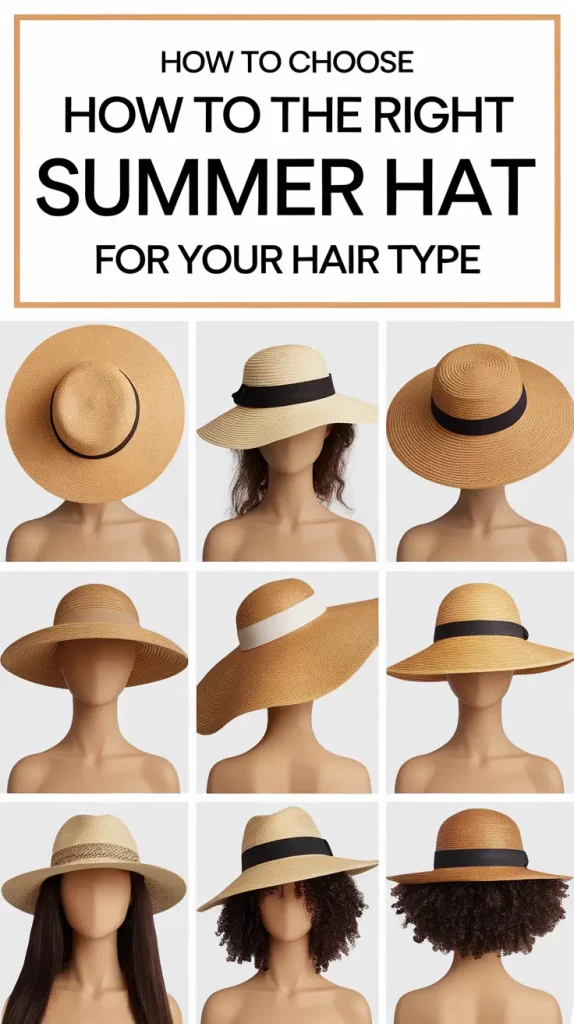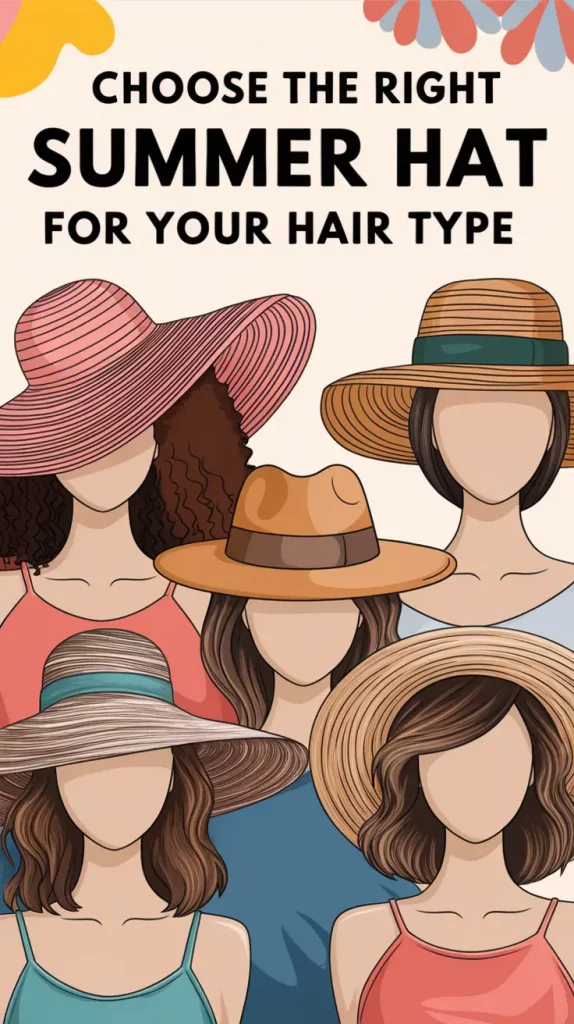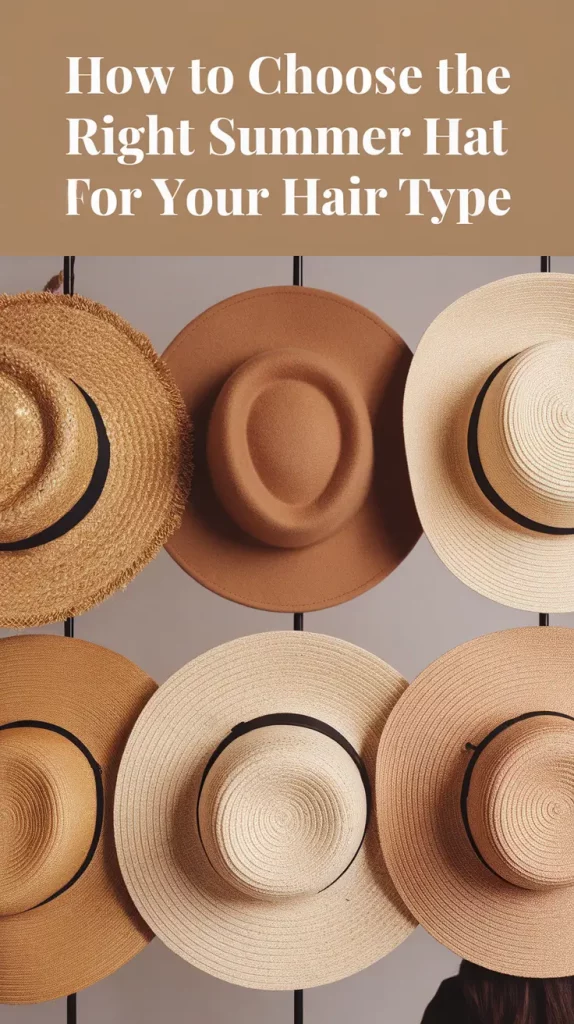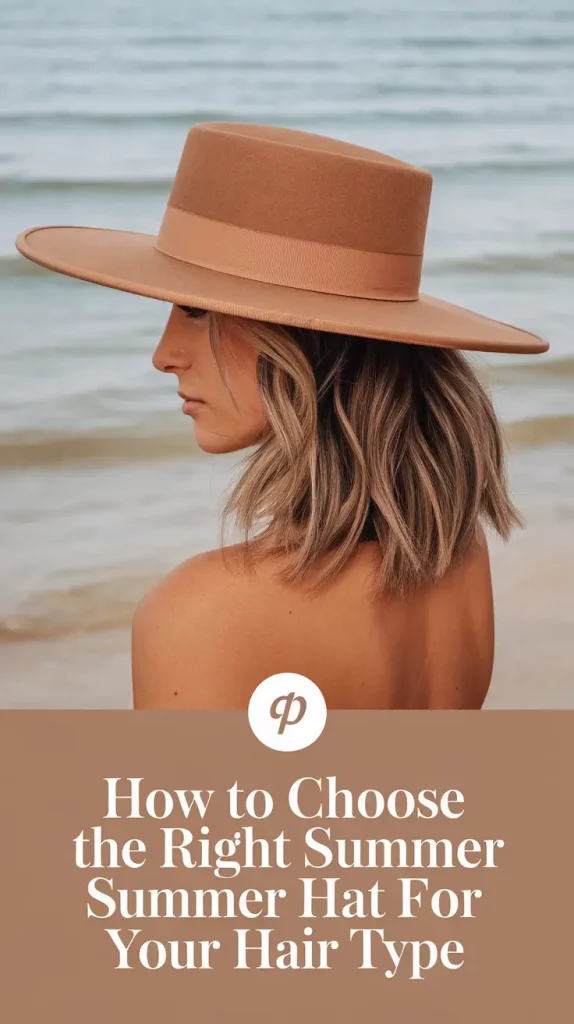How to Choose the Best Summer Hat for Your Hair Type and Style in 2025
The U.S. population faces scalp sunburns along with heat-damaged hair as two of the primary summer hair problems. Most people opt for sunscreen or hair masks, but they fail to understand how a suitable summer hat serves as their primary defensive edge. Due to the increasing selection of breathable, elegant hats during 2025, anyone can find an appropriate accessory.
Picking the perfect summer hat serves more purposes beyond aesthetic appeal. Protecting your hair texture and keeping your hairstyle together while staying sweat-free on warm days explains the necessity of summer hats. Different hairstyles, including curls, thin hair types, oiliness and colors, require specific summer hat models that will both reduce your scalp temperature and make your ensemble look elegant.
Who Should Read This?
- People with sensitive scalps or hair prone to heat damage
- Anyone tired of hat hair in summer
- Style-conscious folks looking to protect their hair and skin
- Curly girls, fine-haired folks, or those with high-maintenance dye jobs
Let’s break down what makes a summer hat right for your specific hair type — and how to shop smarter in 2025.

Why Hair Type Matters When Choosing a Hat
Your Scalp Isn’t Just Skin—It Breathes and Reacts
The choice of sun hat produces diverse impacts beyond appearance alone. Your choice of summer hat affects both water absorption and sebaceous gland function as well as hair breakage incidents. Tightly interwoven synthetic fabrics generate hot and sweaty conditions, posing a significant challenge for sensitive or oily scalp types.
How Different Hair Types Interact with Materials
To thrive, curly hair requires open space for breathability. The thin quality of your hair demands cushioning to protect it from the formation of visible creases and dents. Have you dyed or bleached your hair? A summer hat needs UV protection together with a soft lining for diminished friction effects.
Test the impact of wearing a hat during such hot conditions for half an hour by observing how your hair behaves.
Best Hat Types for Each Hair Texture
Thin or Fine Hair
What Works Best: Lightweight fedoras, soft berets, bucket hats with cotton lining
Avoid: Heavy canvas hats, tight baseball caps without lining
Tips:
- Use a dry shampoo spray before heading out
- Look for hats with an interior sweatband to prevent flattening roots
Curly or Coily Hair
What Works Best: Wide-brim straw hats, loose-fitting bucket hats, turbans
Avoid: Low-profile hats with no room for volume
Tips:
- Leave-in conditioner + silk-lined hat = curl saver
- Try pineappling or braids to reduce frizz under hats
Oily or Straight Hair
What Works Best: Baseball caps with mesh panels, breathable cotton visors
Avoid: Non-ventilated polyester blends
Tips:
- Keep cleansing wipes handy for scalp
- Rotate hat use to avoid scalp buildup

Dyed, Bleached, or Dry Hair
What Works Best: Hats with UV protection, tightly woven fabrics like raffia or UPF-rated cotton
Avoid: Black felt or dark synthetic hats that absorb heat
Tips:
- Use leave-in UV sprays
- Avoid wearing the same hat for more than 3 hours straight in full sun
Summer Hat Trends in the U.S. for 2025
In 2025, American fashion leans toward function and sustainability. Natural fabrics, eco-friendly dyes, and tech-enhanced UV protection are on the rise.
Trending Hat Styles and Their Hair Compatibility
| Hat Style | Ideal For | Material | Popular Look |
|---|---|---|---|
| Wide-Brim Fedora | Fine & Dyed Hair | Linen, cotton | Coastal chic |
| Straw Hat | Curly Hair | Raffia, palm fiber | Boho, vacation core |
| Bucket Hat | All Hair Types | Organic cotton | Retro streetwear |
| Mesh Cap | Oily/Active Lifestyles | Nylon/cotton blend | Sporty casual |
| Turban | Natural/Curly Hair | Silk, jersey knit | Elegant minimalism |
Which one feels most “you”?

Step-by-Step: Choosing the Best Hat for Your Hair Type
Step 1: Know Your Hair Type
Identify whether your hair is:
- Fine or flat
- Oily or quickly greasy
- Curly, coily, or textured
- Dry, bleached, or color-treated
Bonus tip: Ask your stylist or use an online quiz with photos.
Step 2: Choose the Right Material
- Cotton — soft, breathable, best for sensitive scalps
- Linen — excellent for thin hair, lightweight
- Raffia — stylish, natural, good for curls
- Silk-lined — perfect for reducing frizz
- Avoid polyester unless mesh-vented
Step 3: Match Hat Shape to Hair and Face
- Round face: try angular shapes like a fedora
- Long face: go with wide brims or floppy straw hats
- Voluminous hair: bucket hats or turbans with height
- Flat hair: structured caps or sun visors
Step 4: Try It On and Move Around
Test the fit. Bend down, shake your head, and walk fast. Does it stay on? Does it flatten your crown? That’s the real-life test.
Common Questions About Summer Hats and Hair
Will wearing hats every day damage my hair?
Not if you rotate them and choose breathable, gentle materials.
Can I wear a hat with wet hair?
Not ideal. Damp environments under a hat can cause bacterial growth and scalp irritation.
Are there hats that protect dyed hair from fading?
Yes! Look for hats with UPF 50+ and wide brims that shield your strands.
How do I avoid hat hair?
Use volumizing root spray, and let your hair cool before putting a hat on.
Final Thoughts: What to Remember
✅ Your hair type is key when shopping for summer hats
✅ Choose natural, breathable materials to reduce sweat and scalp stress
✅ Match hat shape to your hairstyle and daily habits
✅ The best summer hat does more than protect—it complements your look
The summer requires you to choose your must-have hat right now. Pick your hat preference between straw fedoras or bucket hats. Leave your opinion in the comment section regarding which headwear suits your hair best.
You should pass this resource to everyone who needs improved summer headgear options or anyone with your texture of hair.

